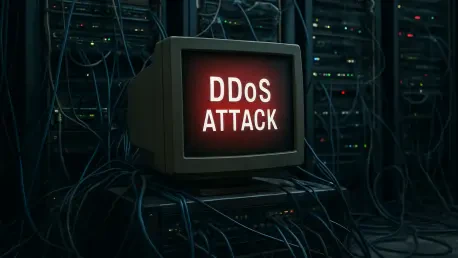In recent times, the financial industry has become the principal target of a staggering increase in application layer DDoS (Distributed Denial of Service) attacks. These particular attacks impersonate genuine user interactions, making it a challenge for institutions to easily detect and mitigate threats. The growing sophistication of these assaults was highlighted by a 74% surge in attacks from the past year, as reported by Qrator Labs. Financial services firms comprised 43.6% of these incidents due to their crucial reliance on uninterrupted online services and digital transactions.
The Emergence of Record-Breaking Botnets
Largest Known DDoS Botnet
A remarkable yet concerning development in the world of cyber threats is the formation of the largest documented DDoS botnet, consisting of 4.6 million infected devices. This colossal network surpasses its predecessors in magnitude by over threefold, introducing unprecedented risks to the digital realm. The ability of this malicious ensemble to initiate millions of requests simultaneously offers it the power to overwhelm and incapacitate online services.
The formidable size and strength of this botnet highlight the sheer vulnerability organizations face today. Financial institutions, continually targeted due to the online nature of their business operations, remain particularly susceptible. The demand for defenses to adapt and scale in response to this scale of threat has never been more pressing. The continuing evolution of such expansive botnets poses a significant challenge requiring constant vigilance and timely intervention.
Growing Network and Transport Layer Threats
Accompanying the rise in application layer attacks is a noted growth in network and transport layer DDoS onslaughts, with a 43% uptick in attacks exceeding 1 Gbps. The integration of these tactics into the hacker toolkit further exacerbates the strain on targeted infrastructure. This evolution requires organizations to be equipped with a range of countermeasures, prepared to handle different types of DDoS disruptions.
The multifaceted nature of these attacks makes them challenging adversaries that necessitate comprehensive defensive strategies. For financial entities, ensuring uninterrupted digital services is crucial, impacting customer trust and operational efficiency. Recognizing and updating defenses against these evolving threats is vital for sustaining business resilience in an increasingly hostile cyber environment.
Strategies for Effective Defense
Recommendations by Industry Experts
Experts such as Qrator Labs emphasize the importance of bolstering incident response strategies and investing in DDoS mitigation technologies. These measures are essential in enhancing the resilience of infrastructure against overwhelming traffic that can lead to significant service disruption. Robust preventative frameworks not only mitigate the attack’s immediate impact but also safeguard the institution’s reputation and customer relationships.
Additionally, stress testing existing digital structures ensures preparedness for potential high-volume attacks, identifying any vulnerabilities that could be exploited by cyber adversaries. By fine-tuning these defenses, organizations can foster a more secure, fortified online environment that withstands the pressures of increasingly sophisticated DDoS attempts.
Cross-Industry Findings
Corroborating the findings from Qrator Labs, entities such as Akamai Technologies and FS-ISAC observed a 23% rise in application layer attacks in the financial sector from 2023 to 2024. This data accentuates the pressing necessity for financial firms to dedicate resources toward defense against botnets and other emergent threats. Collaboration within the industry enables the sharing of insights and development of innovative solutions, forging a unified approach to cybersecurity.
Mobilizing collective expertise and knowledge, the financial sector can proactively combat evolving cyber threats. As technology progresses at an unprecedented pace, fostering collaboration and dialogue will remain seminal to identifying emerging trends and fortifying defenses.
The Path Forward for Cyber Resilience
Recently, the financial sector has emerged as the prime target for a dramatic rise in application layer DDoS attacks. These assaults mimic legitimate user behavior, posing significant challenges for institutions in identifying and dealing with these threats. According to Qrator Labs, there was a notable 74% increase in such attacks over the past year, underlining their growing sophistication. Particularly vulnerable are financial services firms, which accounted for 43.6% of these incidents. This vulnerability is largely due to their heavy reliance on seamless online services and digital transactions, which are crucial for their operations. These attacks can severely disrupt business functions, leading to potential financial loss and damage to reputation. As digital transactions continue to grow, the threat landscape for financial institutions has expanded, demanding advanced protection and more sophisticated security measures to safeguard their operations against increasingly intricate DDoS tactics.









